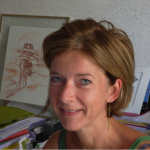About
Neural stem cells (NSCs) are self-renewing and multipotent progenitors generating neurons and glia in the adult vertebrate brain. The success of NSC maintenance and mobilization varies widely among species, brain territories, pathological conditions and individual environment, with important physiological impacts. On these grounds, our proposal aims to define the cellular, molecular and systems components controlling the formation of NSC-containing GZs and sustaining the dynamics of GZ reservoirs during an animal’s life, in the context of environmental challenge. We will rely on a novel and powerful model system, the dorsal telencephalon of the adult zebrafish, which harbors a large and superficially located GZ, enriched in NSCs and capable of efficient NSC recruitment. Our previous work highlighted the general relevance of this model, which harbors, like in mammals, quiescent NSCs of glial identity, and can be subject along life to pathological attrition, silencing, or amplification. This system was also instrumental in our identification of Notch signaling as a key control factor of NSC quiescence, a major parameter of GZ equilibrium. To dissect the mechanistic fundaments underlying homeostasis of this GZ, we propose here a combination of cutting edge approaches including the genetic modification and profiling of single NSCs in situ, the mathematical modeling of NSC clonal behavior in physiological and pathological states, and the development of novel optical tools to image for the first time the behavior of NSC populations and in intact, live adult vertebrate. This multidisciplinary and multi-scale approach will reveal the single-cell and population rules governing GZ dynamics, robustness and drifts in healthy and diseased conditions, and will feed these mechanisms with molecular support. More generally, it will generate a quantitative framework to probe the molecular and cellular effects of pathological and environmental challenges on NSC behavior. This project is conducted in collaboration with Drs. Emmanuel Beaurepaire (Ecole Polytechnique, Palaiseau), Jean Livet (Vision Institute, Paris) and Benjamin Simons (University of Cambridge, UK).


